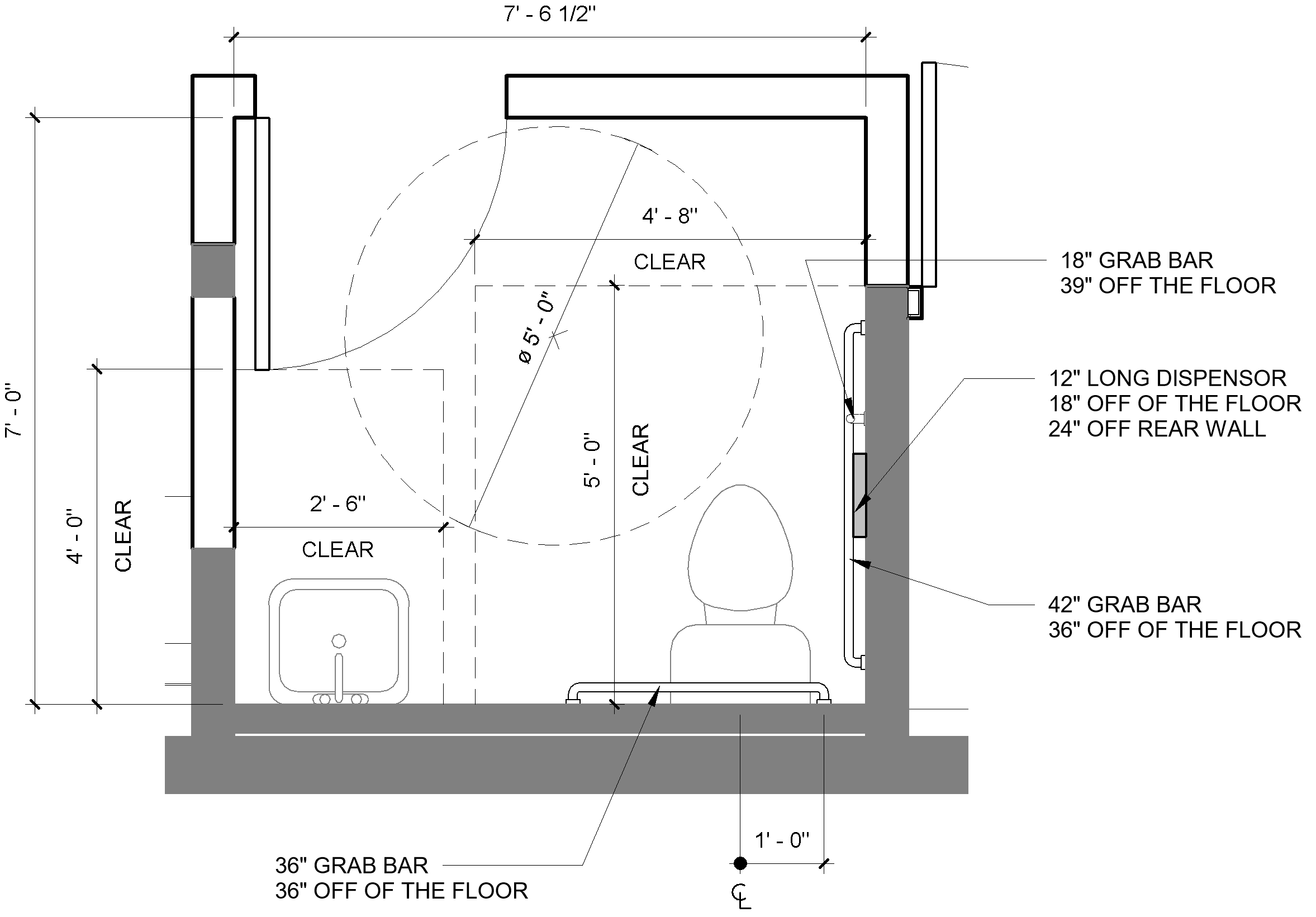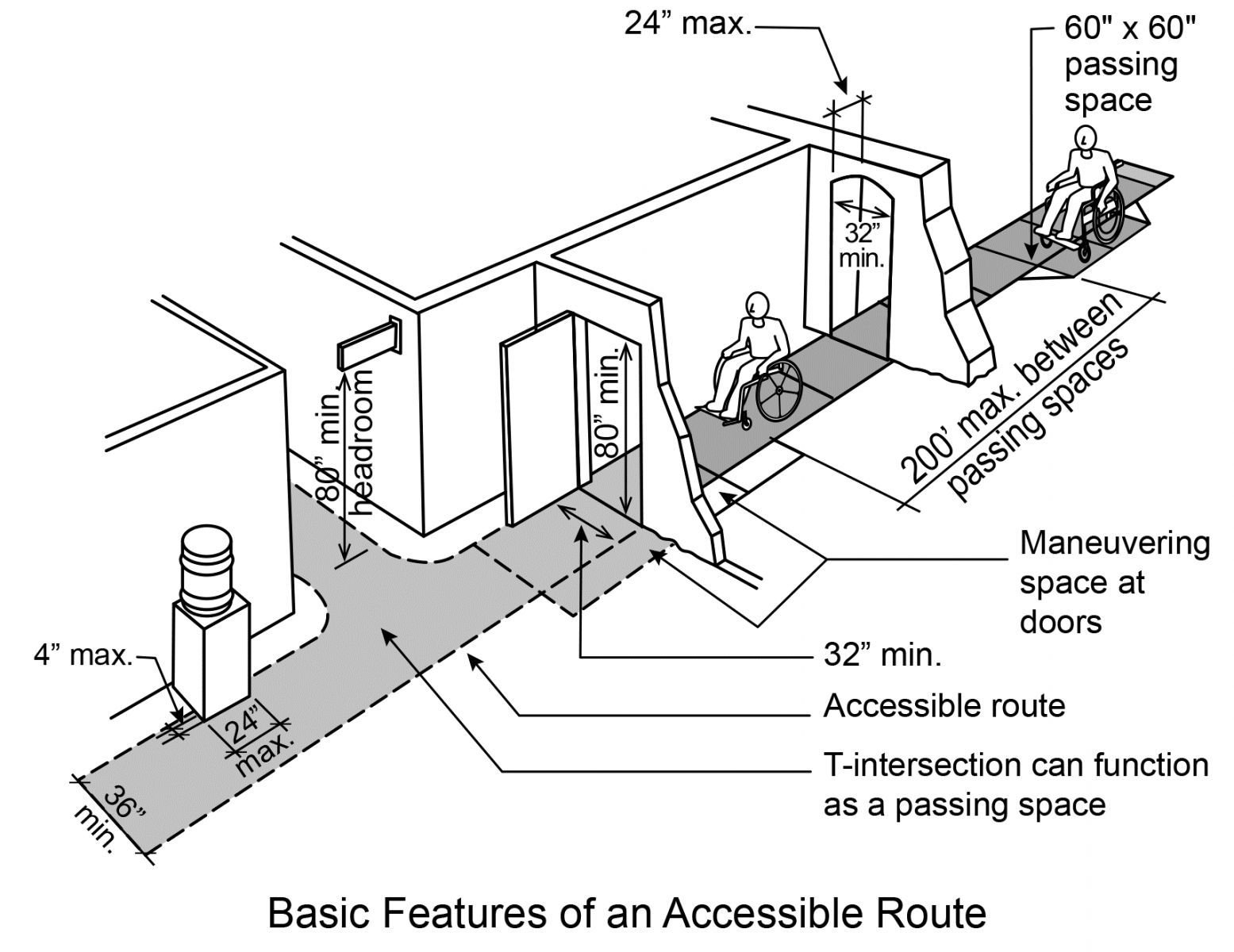What to Know About ADA Requirements for Accessible Single-Family Home Design?
Are you looking for information about the ADA Requirements for Accessible Single-Family Home Design? Are you confused about the regulations, standards and specifications that apply to accessible home design? This article will provide a comprehensive guide on the ADA requirements for single-family homes, including the design standards, accessible features, and legal implications. We will also cover some common misconceptions and frequently asked questions about ADA home design. Whether you are a homeowner, builder, or architect, this article will help you understand the essential elements of accessible home design.
Common Challenges with ADA Requirements for Accessible Single-Family Home Design
There are several common pain points that people experience when it comes to ADA compliance for single-family homes. Lack of understanding of the ADA regulations is a significant challenge for many homeowners and builders. The ADA is a complex set of regulations, and it can be difficult to understand which requirements apply to single-family homes. As a result, many people unintentionally violate the ADA, which can lead to legal problems.

INFOGRAPHIC: ADA Requirement Checklist – JohnTalk – Source www.johntalk.com
The Purpose of ADA Requirements for Accessible Single-Family Home Design
The Americans with Disabilities Act (ADA) is a federal civil rights law that prohibits discrimination against people with disabilities. Title III of the ADA applies to public accommodations, and this includes single-family homes that are rented or sold. The ADA requires that public accommodations be accessible to people with disabilities, and this includes providing accessible features such as ramps, wider doorways, and accessible bathrooms. The purpose of the ADA is to ensure that people with disabilities have the same access to housing as people without disabilities.

Ada Standards For Accessible Design 2024 Standard – ailina ainslie – Source saraqcatharine.pages.dev
Overview of ADA Requirements for Accessible Single-Family Home Design
The ADA requirements for accessible single-family homes are based on the International Building Code (IBC). The IBC is a set of minimum construction standards that are used by most states and municipalities in the United States. The IBC includes requirements for accessible design, such as the width of doorways, the height of countertops, and the slope of ramps. In addition to the IBC, there are also specific ADA regulations that apply to single-family homes. These regulations can be found in the ADA Standards for Accessible Design.

Handicap Restroom Dimensions – BEST HOME DESIGN IDEAS – Source homedesignideas.help
Personal Experience with ADA Requirements for Accessible Single-Family Home Design
I have worked on several projects involving ADA-accessible single-family home design. One project that stands out is a home I designed for a family with a son who uses a wheelchair. The family wanted a home that was both accessible and stylish, and we were able to achieve that goal by incorporating accessible features into the design of the home. For example, we widened the doorways, installed ramps, and created an accessible bathroom with a roll-in shower. The family was thrilled with their new home, and it was a rewarding experience for me to be able to help them create a space that met their needs.

Design and Construction Requirements for ADA Bathrooms Ada bathroom – Source ikisalestock.blogspot.com
What Constitutes ADA Requirements for Accessible Single-Family Home Design?
The ADA Requirements for Accessible Single-Family Home Design are a set of standards that ensure that homes are accessible to people with disabilities. These standards include requirements for the following:
- Entrances and doorways
- Hallways and corridors
- Bathrooms
- Kitchens
- Bedrooms
The ADA also requires that all common areas of a home be accessible, including the living room, dining room, and family room. Additionally, the ADA requires that all appliances and fixtures in a home be accessible to people with disabilities.

Bring Stylish And Functional Ada Kitchen Cabinets Into Your Home – Home – Source homecabinetsets.com
History and Evolution of ADA Requirements for Accessible Single-Family Home Design
The ADA was signed into law in 1990. The ADA Standards for Accessible Design were developed in 1991. The ADA has been amended several times since 1990, and the ADA Standards for Accessible Design have been updated several times since 1991. The most recent update to the ADA Standards for Accessible Design was in 2010.

Ada Toilet Seat Height Requirements In India | Brokeasshome.com – Source brokeasshome.com
Unveiling the Hidden Secrets of ADA Requirements for Accessible Single-Family Home Design
There are several hidden secrets to ADA-compliant single-family home design. One secret is that the ADA does not require that every home be fully accessible. The ADA only requires that certain elements of a home be accessible, such as the entrances, hallways, and bathrooms. Another secret is that the ADA does not specify the exact dimensions of accessible features. The ADA only requires that accessible features be “usable” by people with disabilities.

Handicap Accessible Home Plans | plougonver.com – Source www.plougonver.com
Recommendations for ADA Requirements for Accessible Single-Family Home Design
Here are some recommendations for accessible single-family home design:
- Widen doorways to 36 inches.
- Install ramps at all entrances and exits.
- Create accessible bathrooms with roll-in showers.
- Install accessible kitchens with lower counters and pull-out shelves.
- Provide accessible bedrooms with wider doors and accessible closets.
By following these recommendations, you can create a home that is both accessible and stylish.

Bathroom Vanities with Tops – Bathroom Vanities: Disabled People – Source thebathroomvanities.blogspot.com
Design Considerations for ADA Requirements for Accessible Single-Family Home Design
In addition to the specific requirements outlined in the ADA, there are several design considerations that can make a home more accessible for people with disabilities. These considerations include:
- Use universal design principles.
- Provide clear and concise wayfinding.
- Incorporate accessible features into the overall design of the home.
By considering these factors, you can create a home that is both accessible and beautiful.

Can A Electric Vehicle Park In Handicap Spots – Twyla Amandie – Source cyndeqvirginia.pages.dev
Tips for Implementing ADA Requirements for Accessible Single-Family Home Design
Here are some tips for implementing ADA Requirements for Accessible Single-Family Home Design:
- Start by understanding the ADA requirements.
- Work with an architect or designer who is familiar with the ADA.
- Use universal design principles.
- Incorporate accessible features into the overall design of the home.
- Test the accessibility of your home with people with disabilities.
By following these tips, you can create a home that is both accessible and beautiful.

Wheelchair Accessible Kitchen Design – Apartment Layout – Source apartmentlayout.blogspot.com
Common Misconceptions About ADA Requirements for Accessible Single-Family Home Design
There are several common misconceptions about ADA Requirements for Accessible Single-Family Home Design. One misconception is that the ADA requires that every home be fully accessible. This is not true. The ADA only requires that certain elements of a home be accessible, such as the entrances, hallways, and bathrooms. Another misconception is that the ADA is only for people with wheelchairs. This is also not true. The ADA protects the rights of all people with disabilities, including people with mobility impairments, visual impairments, hearing impairments, and cognitive disabilities.
Fun Facts About ADA Requirements for Accessible Single-Family Home Design
Here are some fun facts about ADA Requirements for Accessible Single-Family Home Design:
- The ADA was signed into law in 1990.
- The ADA Standards for Accessible Design were developed in 1991.
- The ADA has been amended several times since 1990.
- The ADA Standards for Accessible Design have been updated several times since 1991.
- The most recent update to the ADA Standards for Accessible Design was in 2010.
How to Maintain ADA Requirements for Accessible Single-Family Home Design
Once you have implemented ADA Requirements for Accessible Single-Family Home Design, it is important to maintain the accessibility of your home. Here are some tips:
- Keep doorways and hallways clear of obstacles.
- Make sure ramps are in good repair.
- Keep bathrooms accessible.
- Keep kitchens accessible.
- Keep bedrooms accessible.
By following these tips, you can keep your home accessible for people with disabilities.
What if ADA Requirements for Accessible Single-Family Home Design Are Not Met?
If ADA Requirements for Accessible Single-Family Home Design are not met, the homeowner may be subject to legal action. The ADA is a federal law, and it